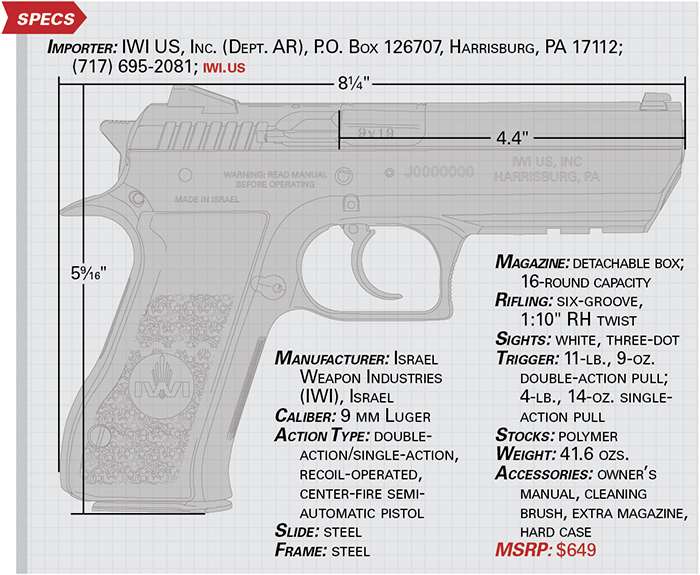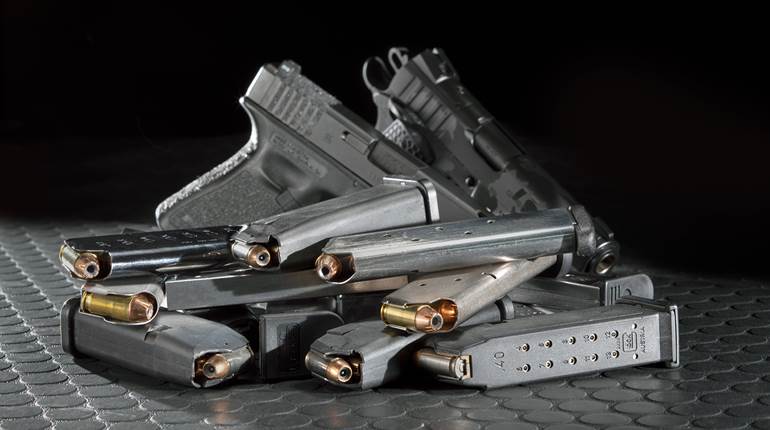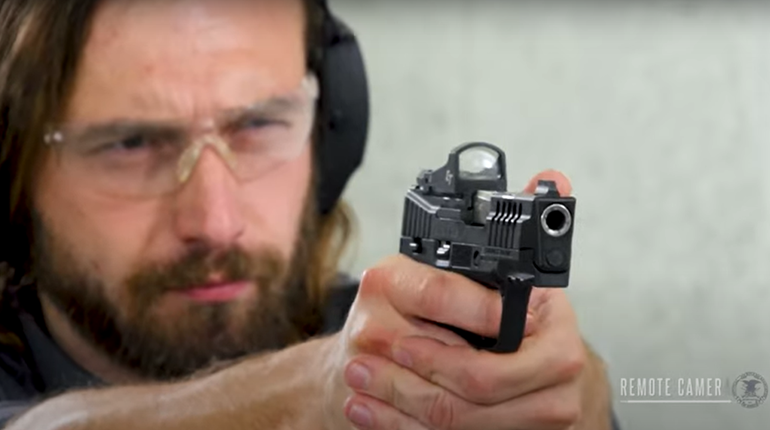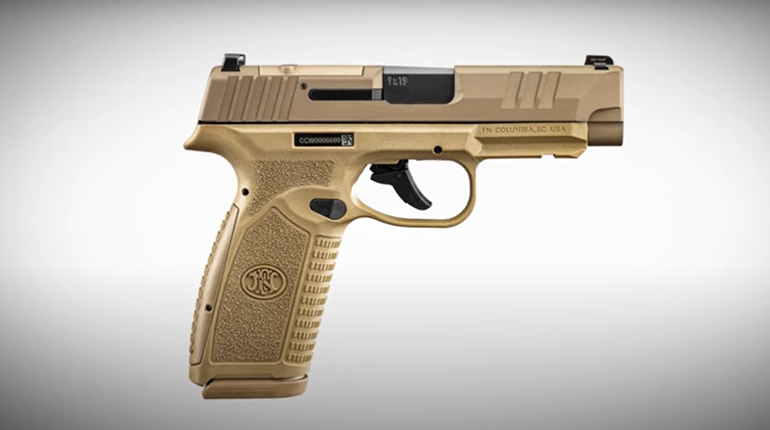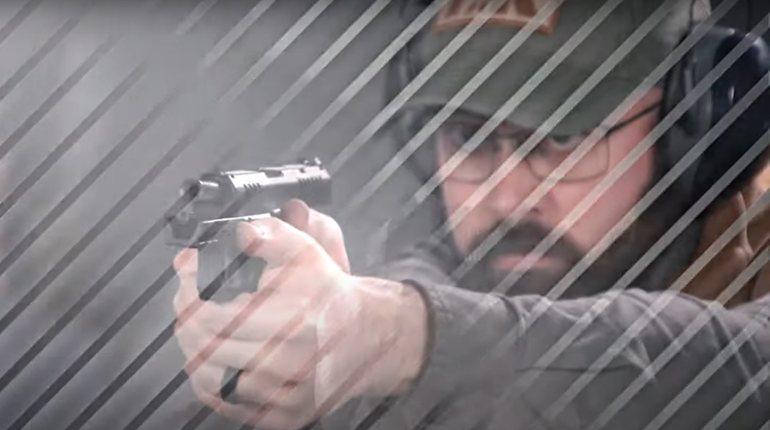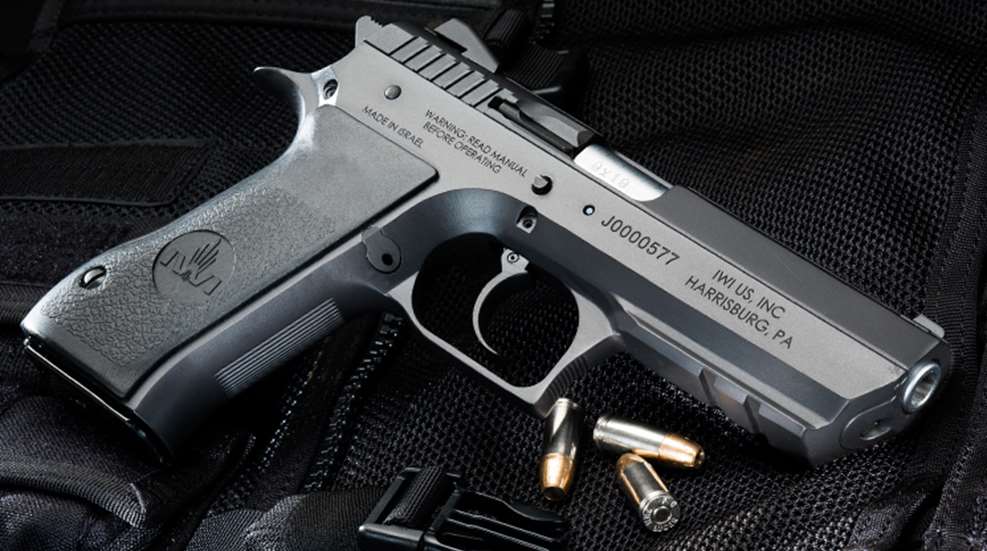
For 25 years, a CZ 75 clone manufactured in Israel by Israel Weapon Industries (IWI), formerly Israel Military Industries (IMI), has been available in the United States for commercial sale. Sold under such names as Baby Eagle (Magnum Research) and UZI Eagle (Mossberg), the venerable design recently came under the direct control (import and sale) of IWI’s stateside subsidiary, IWI US, Inc., of Harrisburg, Pa. Cataloged as the Jericho 941, its numerical moniker is derived from the pistol’s initial chamberings—9 mm Luger and .41 AE. Available in polymer and steel versions and with several additional frame sizes and chamberings since the initial release—the full-size steel version in 9 mm Luger is the subject of this review.
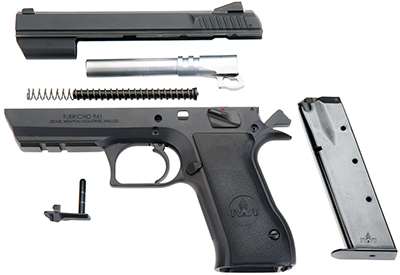
The Jericho 941 is a locked-breech, short-recoil-operated, semi-automatic pistol with a 16-round magazine capacity. Initial observation shows the Jericho to be a very stout and well-machined steel-frame pistol. Its full-size frame may be a stretch for concealed carry, but many users will find its profile appropriate for use as a service pistol or home-defense firearm.
Starting from the top down, the Jericho’s steel slide exhibits fairly good drift-adjustable, combat-style, three-dot sights that are easily discernible even in soft lighting. Along the top of the slide are a series of shallow serrations extending laterally that help reduce glare. In common with the CZ 75 and its progeny, the Jericho has a low bore axis and minimum slide height owing to the gun’s design feature of the slide nesting within the frame rather than overhanging it. Despite this feature, the slide’s cocking serrations (six ridges and seven grooves) allow for ample purchase during manipulation.
On the left rear of the slide and frame are two recessed circular dimples that serve as guides for disassembly. The two marks must be aligned by pulling the slide slightly rearward. The slide stop above the trigger can then be removed, enabling the slide to advance forward off the frame for field stripping. We found this to be a fairly simple operation, not dissimilar to the takedown procedures of other popular semi-automatic pistols.
The cold-hammer-forged, 4.4", CrMoV steel barrel locks up in Browning fashion, with two locking lugs just forward of the barrel hood and chamber location. A cam cut in the barrel’s underlug acts against the slide stop pin to unlock the barrel from the slide after the pair move together toward the rear. During disassembly, barrel removal follows the removal of the steel guide rod and recoil spring assembly. Reassembly is in the reverse order.
We found the Jericho’s steel frame and plastic slab-side stocks to be smoothly textured and unobtrusive in the hand. The vertical serrations along the frame’s backstrap and frontstrap are mildly aggressive and improve purchase. Forward of the trigger guard is a section of Picatinny rail machined into the frame’s dust cover for the addition of accessories, such as lights or lasers. The nose of the pistol is also beveled from barrel to dust cover, a feature that eases re-holstering.
Overall manipulation of the Jericho is straightforward. The magazine-release button on the left side of the frame, just behind the trigger guard, is easily depressed, dropping the steel magazines smoothly. The manual thumb safety (up for safe and down for fire) is mounted on the left side of the frame and allows for either “Condition One”—cocked and locked—carry, or traditional double-action/single-action operation—a seminal feature of the original CZ design. A loaded-chamber indicator placed atop the slide serves as a friendly visual reminder when a round is in the chamber.
At the range we fired several magazines of mixed ammunition to test the function of the pistol. Its 41.6-oz. weight made it a smooth-shooting gun with fluid follow-up shots holding easily and accurately on target. No malfunctions occurred—the Jericho digested everything we tossed at it and ejected empty cases in a uniform location. For the accuracy phase of testing, three loads were selected to represent a range of 9 mm Luger bullet weights. The accompanying table contains the results of shooting five consecutive, five-shot groups from a sandbag rest. Liberty Civil Defense, with its lightweight 50-gr. bullet, provided the best accuracy, followed by the 115-gr. American Eagle and 147-gr. Hornady loads.
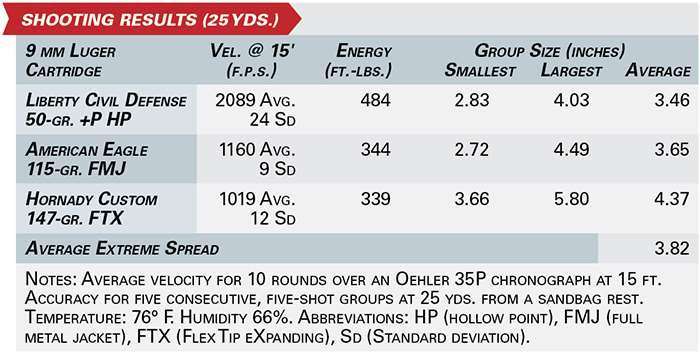
Velocity of the +P Liberty load led the pack at 2089 f.p.s., nearly 1000 f.p.s. faster then the other two test subjects. Most impressive was the muzzle energy produced by such a light bullet—484 ft.-lbs. Despite running such a hot cartridge, we noticed little in the way of muzzle flash or increased recoil. According to IWI, the Jericho 941 9 mm is safe for all +P and +P+ loads, and moving forward, future manuals will include that information.
After running the Jericho 941 through its paces, we found it to be well-designed, well-constructed and pleasant to shoot. It certainly meets the criteria for a service-grade, full-size, hammer-fired pistol with room for accessories.
